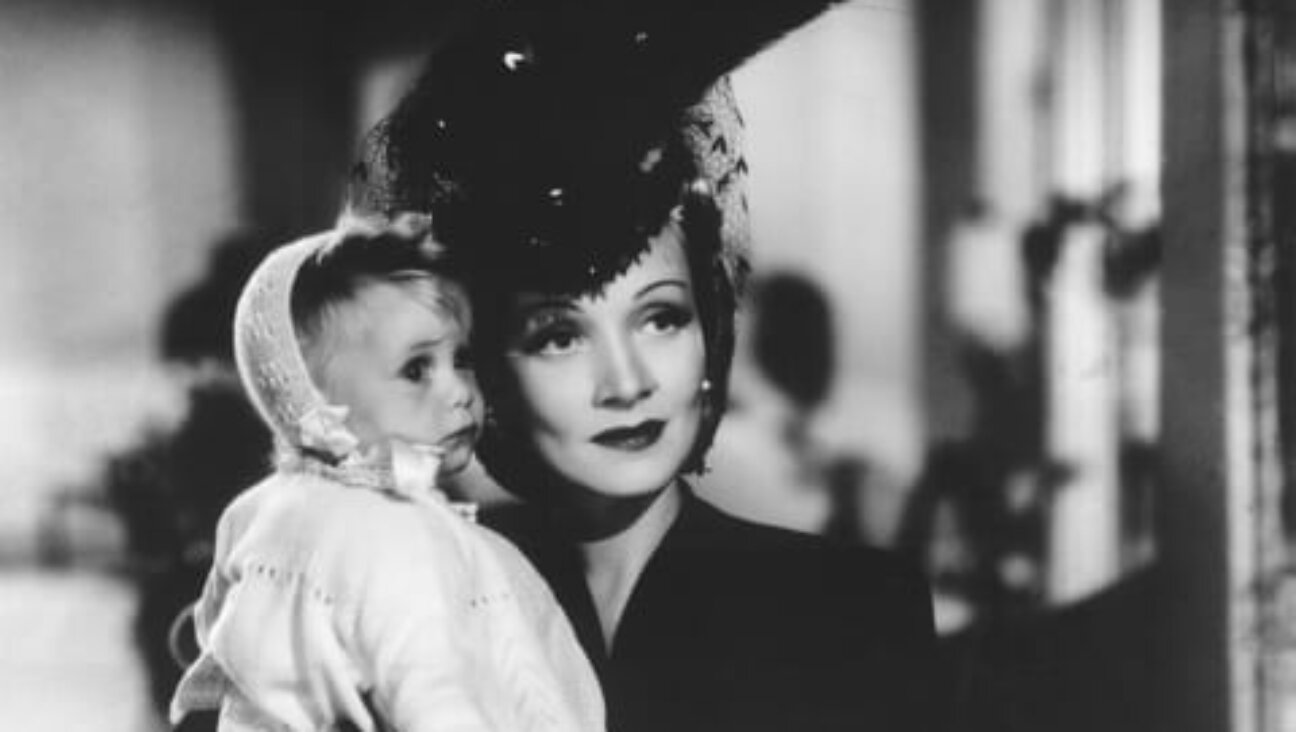Wigging Out
Ruth Seldin writes from White Plains, N.Y.:
“The Hebrew term for a wig, pe’ah nokhrit, strikes me as odd and paradoxical. It is odd because it’s made up of two biblical words, neither of which seems related to a wig: Pe’ah, which refers in the Bible to the hair of the beard or the upper cheeks, and nokhri, ‘foreign’ or characterizing non-Israelites. The paradox is that the Hebrew term implies that a hairpiece is a foreign object, while most of us today think of it as a very Jewish object, commonly worn by extremely Orthodox women. I’d love to know more about the origin of the term and its history — and do you happen to know when Orthodox women took to wearing wigs?”
In answering Ms. Seldin’s question, we have to begin by distinguishing between two English words that she has conflated: “wig” and “hairpiece.” A hairpiece is a shaped cluster of human or artificial hair added to the natural hair of the wearer; a wig entirely covers or takes the place of the wearer’s own hair. And with this in mind, let’s address the subject at hand.
The word pe’ah occurs many times in the Bible, generally with the meaning of “direction,” “side” or “corner.” Its connection to hair is limited to several passages in the books of Leviticus and Jeremiah, in the first in which we find the injunction “Ye shall not round the corners [pe’ot; also translatable as “sides”] of your heads, neither shalt thou mar the corners of thy beard.” From here comes the age-old Jewish custom of growing beards and the long ear locks known in Hebrew as pe’ot and in Yiddish as peyes. The custom may have arisen in opposition to the ancient Egyptian practice of shaving the chin and cutting hair short or in tonsured form, but in any case, the word pe’ah in Leviticus would seem to refer to the curls, wisps or locks of hair that grow from the sides of the chin or upper jaw.
The term pe’ah nokhrit, on the other hand, is first found in the tractate of Shabbat in the Mishnah, the sixth chapter of which deals with the jewelry and other adornments that may be worn by a woman when stepping out of her house on the Sabbath if she is to observe the laws against carrying objects on the day of rest. A pe’ah nokhrit or “foreign curl” is one of the adornments considered permissible, and there are good reasons for believing that the term denotes a hairpiece rather than a wig.
One reason is that a “foreign curl” (Roman and Roman-influenced women in the period of the Mishnah commonly wore hairpieces to enhance their looks) does not sound like the entire head of hair that constitutes a wig. Another is that ancient rabbinic Hebrew had a separate word for wig, kafletin (from Latin capillitium). This occurs in the Jerusalem Talmud, which rules that a woman who leaves her house with a kafletin does not violate the rabbinic prohibition on being seen in public with her hair uncovered. Presumably, had the rabbis of the Mishnah felt the need to make it clear that wearing a wig on the Sabbath was also not a forbidden form of carrying, they would have used the word kafletin there, too. This would seem to be the opinion of authoritative Mishnaic commentator Ovadia of Bartinoro (1440-1516), who defines the wearer of a pe’ah nokhrit as “a woman without enough of her own hair who takes the hair of other women and puts it on her head as though it were her own.”
Interestingly, the sheytl, which is the wig worn, with talmudic permission, in place of their own hair by many ultra-Orthodox women, started out linguistically as a hairpiece also, because German Scheitel (which is the medieval source of the Yiddish word) denotes the crown or top of the head — ergo, a sheytl was originally an addition fitted atop a woman’s natural hair to make it look more abundant or fancily coifed. It was only in the 16th century, when wigs first started coming into fashion in European society (the trend kept growing stronger until the end of the 18th century), that some Jewish women started wearing them instead of covering their heads with hats or kerchiefs, and sheytl (and with it, pe’ah nokhrit) changed its meaning accordingly. One of our earliest references to the sheytl qua wig is found in the 16th-century code of law the Shulchan Aruch, which cites a rabbinical authority as relying on the Jerusalem Talmud in permitting it.
Subsequently, however, other rabbis challenged the permissibility of the sheytl, with some quite eminent ones coming out against it, and the topic continues to cause lively debate in the ultra-Orthodox community to this day. The arguments against it are not just legalistic ones. As many ultra-Orthodox Jews themselves point out, it is a dubious practice to use a rabbinic law that was meant to lessen women’s sexual allure in public in order to justify expensive wigs that cannot be told apart from real hair and are no less attractive. But being an amateur linguist, not an amateur talmudist or moralist, I will stop here.
Questions for Philologos can be sent to [email protected].
The Forward is free to read, but it isn’t free to produce

I hope you appreciated this article. Before you go, I’d like to ask you to please support the Forward.
At a time when other newsrooms are closing or cutting back, the Forward has removed its paywall and invested additional resources to report on the ground from Israel and around the U.S. on the impact of the war, rising antisemitism and polarized discourse.
Readers like you make it all possible. We’ve started our Passover Fundraising Drive, and we need 1,800 readers like you to step up to support the Forward by April 21. Members of the Forward board are even matching the first 1,000 gifts, up to $70,000.
This is a great time to support independent Jewish journalism, because every dollar goes twice as far.
— Rachel Fishman Feddersen, Publisher and CEO
2X match on all Passover gifts!
Most Popular
- 1

News A Jewish Republican and Muslim Democrat are suddenly in a tight race for a special seat in Congress
- 2

Fast Forward The NCAA men’s Final Four has 3 Jewish coaches
- 3

Fast Forward Cory Booker proclaims, ‘Hineni’ — I am here — 19 hours into anti-Trump Senate speech
- 4

Film & TV What Gal Gadot has said about the Israeli-Palestinian conflict
In Case You Missed It
-

Fast Forward From ‘October 8’ to ‘The Encampments,’ these new documentaries illuminate the post-Oct. 7 American experience
-

Fast Forward Jews at Tufts are furious over ICE seizing a pro-Palestinian grad student. But they’re wary of joining protests for her.
-

Film & TV How Marlene Dietrich saved me — or maybe my twin sister — and helped inspire me to become a lifelong activist
-

Fast Forward Pennsylvania Jewish groups condemn ‘genocide’ slogan on Gisele Fetterman’s charity
-
Shop the Forward Store
100% of profits support our journalism
Republish This Story
Please read before republishing
We’re happy to make this story available to republish for free, unless it originated with JTA, Haaretz or another publication (as indicated on the article) and as long as you follow our guidelines.
You must comply with the following:
- Credit the Forward
- Retain our pixel
- Preserve our canonical link in Google search
- Add a noindex tag in Google search
See our full guidelines for more information, and this guide for detail about canonical URLs.
To republish, copy the HTML by clicking on the yellow button to the right; it includes our tracking pixel, all paragraph styles and hyperlinks, the author byline and credit to the Forward. It does not include images; to avoid copyright violations, you must add them manually, following our guidelines. Please email us at [email protected], subject line “republish,” with any questions or to let us know what stories you’re picking up.














